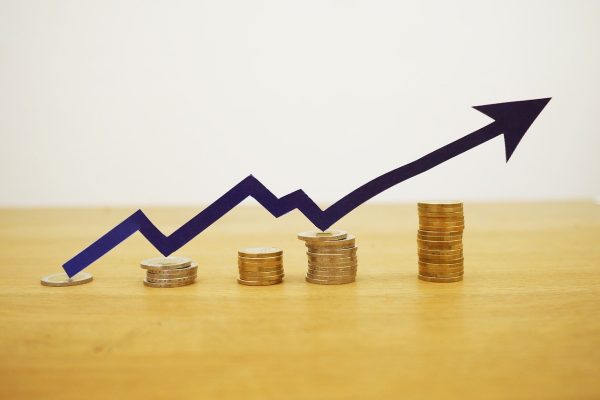

Finance
Everything You Need To Know About Investments
Modified: September 6, 2023
Discover everything you need to know about investing and investments with our all inclusive, comprehensive guide to the topic. You'll be a pro in no time!
(Many of the links in this article redirect to a specific reviewed product. Your purchase of these products through affiliate links helps to generate commission for LiveWell, at no extra cost. Learn more)
Welcome to the 411 on investments and investing. Whether you’re a beginner looking to dip your toes into the wonderful world of investments, or you’re a pro on the hunt for new avenues to help your money grow – we believe we have something for everyone.
What Are Investments?
The dictionary will tell you quite simply that investments are “the action or process of investing money for profit”. However, this might prove to be of little-to-no help, especially if you are something of a newbie to this side of finance.
What we want you to understand before we begin is that investments are not reserved simply for the rich. Especially in this day and age, there are numerous avenues and methods for those looking to invest some money in the hopes of making a profit.
Think of this as a crash course on investments. And if you find yourself wanting to find out more about any particular area, click through any of the links for a more in-depth explanation of the topic.
Typically, individuals look to invest once they have attained financial freedom. However, for many others, small investments actually help them on their course to financial freedom and stability.
If you are a beginner who wants something with little-to-no risk, consider looking into the likes of your company’s retirement funds – 401k for example. On the other end of the spectrum, if you’ve maxed out most of your investment options, you might want to consider cryptocurrency.
You might also want to check out this link to the best investment apps for the year!
Table Of Contents:
What Are The Different Types Of Investments?
- Stocks
- Bonds
- Options
- Exchange-Traded Funds (ETFs)
- Mutual Funds
- Index Funds
- Cryptocurrency
Things You Should Know Before Investing
- Building A Personal Financial Roadmap
- Building Your Investment Portfolio
- What Is An IPO?
- Stock Market Hours
- Passive Investing V.S. Active Investing
Saving While Your Investments Work For You
- Make Budgeting Easy
- 401K
- 403B
- IRA
Which Investments Are For You
- High-Risk VS Low-Risk Investments
- Best Investments For Beginners
- Best Advanced Investments
Conclusion
____
By this point, you should have a basic understanding of the fact that there are various ways to start your investment portfolio. We are going to zoom in on the various types of investments that you might be considering. At the same time, we are also going to give you a brief introduction to the risks and gains of each.

Photo from Pixabay
What Are The Different Types Of Investments? – Stocks
What are stocks? Put simply, stocks are an investment that you put in a corporation. Buying or investing in stocks means that you are entitled to part of the company’s earnings.
In essence, there are 4 types of stock that an investor should explore. This is especially so if you’re looking to have a well-balanced, stable investment portfolio. Namely, they are Growth Stocks, Dividends (Yield Stocks), New Issues, and Defensive Stocks.
Before you start investing in stocks, you’re going to want to decide how you want to go about building your investment portfolio. There are 2 options that you might want to consider, each of which depends on how invested (pardon the pun) you want to be in your stocks.
1) Are you the kind of person who is very hands-on and prefers to be involved in projects from start to finish?
If you found yourself nodding vigorously to the question above, then the best option for you would be to secure yourself an online broker. An online broker will help you buy and sell stocks but you remain predominantly in-charge of the steps you take. They will also advise you as to whether long term or short term investments are better for you.
2) You do not relate at all to statement #1 and would prefer if someone could manage your stocks for you.
If you are fairly new to investments and all of this seems rather intimidating to you, you might want to consider a robo-advisor. A robo-advisor is tasked with managing your portfolio and buying stocks on your behalf based on the calculated risks and gains.
For a more in-depth explanation and comparison between online brokerages and robo-advisors, you can check this article out. We also delve deeper in terms of our explanation of the pros and cons of the two options.
Before you decide which of the two categories you fall under, it might do you well to first understand how to read stock charts.
What Are The Different Types Of Investments? – Bonds
What are bonds and are there different types of bonds? Essentially, when you invest in bonds, you are lending money to an entity that is then paid back on set dates (as your bonds mature) with a percentage of interest. These entities tend to be government institutions, municipalities, cities, or states.
Since bonds pay you back with interest regularly, they are a great source of a passive income!
As with stocks, if you’re looking to invest in bonds you can go about it in two ways. You can either rely on a robo-advisor or seek the advice of an online brokerage. It, once again, boils down to how involved and how much say you would like to have over your bonds.
Do take note that bonds tend to be a little more complicated than stocks. So if you’re feeling a little unsure, an online brokerage might be the way to go.
However, the most basic thing you should know about bonds is that in the U.S., they can be found under three categories.
- Federal Governments & Agencies (Safe Debt)
- Corporations, Cities, & States (Low-Risk) – Known as investment-grade bonds
- Corporations, Cities, & States (High-Risk) – Known as junk bonds or below-investment-grade bonds
To keep things as transparent as possible, many Wall Street companies will award ranks to bonds. By doing this, it becomes clear to you as an investor which bonds are junk bonds. And in turn, which bonds are lower risk, safer alternatives.
What Are The Different Types Of Investments? – Options
Buying an option gives you, the holder, the right to sell a particular asset at a set price or time. However, an option also keeps you obligation-free.
When looking at options, it helps to know that there are two basic types. That is a Call Option and a Put Option. Call Options allow the buyer to buy the asset in question. On the other hand, Put Options allow the buyer to sell said asset.
Generally speaking, options run a lower risk than stocks. Which is good news for the newbie investor!
They are thought to present four advantages:
- Cost-Efficiency
- Run Lower Risk Than Equities
- Higher-Percentage Returns
- Offer Strategic Alternatives
What Are The Different Types Of Investments? – Exchange-Traded Funds (ETFs)

Photo by Marco Verch on Flickr
What are exchange-traded funds (ETFs)? When looking at the world of investments, you’ve most likely already come to realise that there are many ways to go about this. When it comes to making your money work smart, there’s more than a single means of investment.
Looking at ETFs, we can relate them to stocks. They are a collection of securities that trade on an exchange. Hence the name, exchange-traded funds. It is important to note that ETFs can include all the various channels for investments.
On the plus side, ETFs present the advantage of fewer broker commissions and expense ratios when compared to buying individual stocks.
It is also important to note that while ETFs and mutual bonds share many similarities, one big difference is that the price of an ETF constantly fluctuates. ETFs can be either global or US-focused.
As mentioned, ETFs are a collection of securities, meaning that they are a good choice for the investor looking to diversify their portfolio. There are multiple underlying assets to each ETF, meaning that buying an ETF does not limit you to one particular type of investment.
Here are the various types of exchange-traded funds (ETFs):
- Bond ETFs
- Inverse ETFs
- Currency ETFs
- Industry ETFs
- Commodity ETFs
Each of the five mentioned above are rather self-explanatory. However, do take note that Inverse ETFs are exchange-traded notes (ETNs). That is; bonds backed typically by banks, that is traded like stocks.
If you’re feeling a little lost, it would be good to check with your broker if ETNs are the best move for your investment portfolio at this given moment.
How To Buy & Sell ETFs?
Very simply put, you can buy and sell ETFs through most of the channels we’ve mentioned with regards to other investments. You have the option of online or traditional brokerages or robo-advisors. All of which will be able to help you buy and sell exchange-traded funds.
As with any other method of investment, you’re going to want to decide how hands-on (or not) you’d like to be. That will help you decide between brokerages and robo-advisors.
However, it is always wise to do some form of research before making these decisions. This does, after all, involve your hard-earned money. You might want to delve a little deeper into the world of the best ETFs for the coming year.
What Are The Different Types Of Investments? – Mutual Funds
Mutual funds are a collective pool of funds from more than one investor. They are also, what can be seen as, a basket of investments that are made up of stocks. We have just mentioned that ETFs are also a basket of various investment options, not excluding stocks. So what separates mutual funds and ETFs?
One key difference between mutual funds and ETFs are that the latter are index-tracking. What this means is that match prices and returns of an index. However, that is simply one key difference between the two, for a better picture you might want to check out this full list of differences between mutual funds and ETFs.
What Type Of Mutual Funds Are There?
- Equity Funds
- Fixed Income Funds
- Index Funds
- Balanced Funds
- Money Market Funds Income Funds International/Global Funds
One particular advantage of going with the route that is mutual funds is that it gives you the opportunity to invest in assets that you might otherwise be unable to afford. The pooled funds give you a bigger starting capital and therefore a better chance at affording these assets.
What Are The Different Types Of Investments? – Index Funds
Here’s where it gets a little tricky. You might have noticed if you’ve been doing your research, that index funds, mutual funds, and ETFs all run very close. This can be especially confusing for beginners who already find themselves intimidated by the world of finance and investments. So which one should you be looking at?
However, we’re here to show you that there is nothing to fear and once the three are broken down, the differences are actually quite clear.
You might have heard the terms index fund and ETF used interchangeably, however, there are slight differences. Typically, when someone refers to ETFs, they are looking at index-tracking ETFs.
The simplest way one can differentiate the three is to remember that index funds and ETFs are different but sometimes interchangeable.
Index funds are priced only at the end of the day. While ETFs, like stocks, are priced at any time of the day. Both index funds and ETFs invest in an underlying benchmark index. Mutual funds, on the other hand, are usually actively managed.
What Are The Different Types Of Investments? – Cryptocurrency

Photo by Alpari Ong on Flickr
If you’re extremely new to the game, then you might only just have heard the term ‘cryptocurrency’ or ‘bitcoin’ being tossed around in conversation. Unfortunately, that is where your knowledge of the topic caps.
Essentially, cryptocurrency is a new form of currency that can be used, in some instances, to make purchases. However, on a more broad scale, cryptocurrency can be seen as an asset. You can invest in cryptocurrency the same way you might invest in gold or silver.
One of the main reasons that cryptocurrency is so appealing is the fact that it is not controlled by a central authority. They are therefore unaffected by the likes of government manipulation or interference.
Cryptocurrency is more than just Bitcoin. There exist in the market a wide variety of cryptocurrencies that you can choose to invest in. While Bitcoin might be the oldest and most well-known, you can also check out cryptocurrencies like Ethereum [ETH] or Monero [XMR]. Alternatively, you can see how Bitcoin fares against Ethereum.
Thankfully, as with other investments, you can also look into securing a robo-advisor to aid you on your journey to investing in cryptocurrency.
Things You Should Know Before Investing – Building A Personal Financial Roadmap
By having a financial roadmap, you can work towards financial stability and living a debt-free life. While bigger debts such as your mortgage might be a little more difficult, it is important to strive towards minimal debt and an emergency fund.
In building a financial roadmap, you’re going to want to work through several steps. We’ve outlined them for you! If you’re reading this, you’re already taking the steps towards financial freedom!
1. Set financial goals
It is key to first decide what your financial goals are, either as an individual or as a family. You should include a list of both short-term and long-term goals.
Your short-term goals should ideally help you work towards your long-term goals. For example, the short-term goal of paying off your credit card bills will aid you with the long-term goal of remaining debt-free.
2. Determine your net worth
Through being aware of your net worth, you garner a better understanding of your financial standing. Which makes it easier for you to make realistic goals when it comes to attaining financial stability and taking the next step towards making investments.
Figuring out your net worth simply entails you taking your total assets and deducting your yearly liabilities. If the final figure is positive, you will be pleased to know that you’re headed in the right direction.
3. Setting and maintaining an emergency fund
An emergency fund is an extremely important aspect of attaining financial stability. Which, as we have mentioned, is the initial step you should take before considering investments.
An emergency fund should ideally be six months worth of salary. While it may seem like a large number for some, it is a good amount to carry you through a crisis. Your emergency fund should only be accessed should you lose your job or find yourself in the unfortunate event of a medical crisis.
4. Clear all debts
One of the biggest hindrances that people face is growing debt. They definitely put a damper in your plan to achieve financial stability and begin investing.
If you find yourself struggling, aim to pay off your smallest debts first. This not only eases your burden but is easier to attain. Alternatively, some might find paying off their greatest debts first works more to their advantage. This being credited to the fact that larger debt often comes with larger interest rates.
5. Identify unnecessary expenditure
You might be spending more than you need to without even realising it. Take some time to really look at your expenses. Chances are you will be able to spot at least one area in which you’re spending more than you should.
Perhaps you’re too reliant on ride-hailing applications instead of taking advantage of public transport. Alternatively, you might be shopping in higher-end supermarkets.
They may be small things but if you add them up, you’ll be surprised at how much money you’re letting go to waste!
6. Plan
Once you’ve weeded out all potential issues in your current finances and set goals for the future, you can start to plan for investments! Look at what investments work best for you and your current situation.
Things You Should Know Before Investing – Building Your Investment Portfolio
Your investment portfolio is linked to your personal finance roadmap. There are the initial steps of ensuring that you have cleared any outstanding debt, have built an emergency fund, and are working your way to owning your house.
Once you’ve tackled all the steps mentioned in the personal finance roadmap portion, you’re ready to take on your investment portfolio.
You’re going to want to be smart when it comes to building your investment portfolio. This means that you should fully exhaust the 401-plans that are available. These funds are designed in such a way that you are basically cashing in on free cash. However, we will talk more about this in the later part of our article!
If you’ve followed all the steps leading up to this point, you’re now financially free and financially stable! You can now look at available options to invest your emergency cash. However, you want to be selective when doing this.
Certificates of Deposits
Look for methods of investment that allow you to take your money out should you need it. This means safe investments with short maturity periods as opposed to high-risk investment options.
A Certificate of Deposits or CDs are a good, safe investment to look at. The Federal Deposit Insurance Corporation insures CDs up to $250 000. Meaning you can rest assured that your funds are safe since you cannot lose your principal.
However, do take note that CDs also have time-frames and taking your money out before the stipulated time frame will result in a penalty fee. For this reason, we suggest you do not invest your entire emergency fund into CDs.
Things You Should Know Before Investing – What Is An IPO?
You’ve likely come across the term IPO or Initial Public Offering. However, do you know what it means or signifies when it comes to investments?
An Initial Public Offering, as the name implies, is when a company offers initial shares of their company to the public. The owners of the company are giving up shares of their company to shareholders.
This is also an indication that the company has become successful enough to open their doors for growth. With an IPO, a company is able to invest in the equipment they might need and pay off debt, should any exist.
IPOs make it possible for a company to sell shares, which in turn, is extremely handy for mergers and acquisitions.
Most importantly, what you need to remember is that if a company has made an IPO, you can make a move towards buying stocks and making an investment.
Things You Should Know Before Investing – Stock Market Hours

Photo from Pexels
If you’re about to start buying stocks, one of the most important things you should know about is the stock market hours. After all, the stock market is where all the action happens. Stocks that you might be interested in buying are distributed and sold on the stock market. Once you’ve got this down, you can start looking at the best stocks to be buying.
Some of the names to watch are the London Stock Exchange, Shanghai Stock Exchange, Swiss Stock Exchange, New York Stock Exchange, and of course, Nasdaq.
If you’re looking to get your foot through the door, you’re going to need to acquire a stockbroker. These days you can get yourself an online stockbroker who will help you invest and decide what stocks will work best in your favour.
While Nasdaq is an American-based stock market, it serves as an electronic marketplace globally. Normal trading hours begin at 9.30am and end at 4pm (local time). However, there are also pre-market trading hours and extended trading hours. These are from 4am to 9.30am and 4pm to 8pm respectively.
If you’re looking for more in-depth information on stock market hours, you can check out our in-depth explanation here!
Things You Should Know Before Investing – Passive Investing V.S. Active Investing
Before you start investing, you’re going to want to ask yourself how much you want to be involved with your investments?
Are you a little bit of a control nut? Or do you prefer to sit back and let someone take the reins? Once you’ve decided what kind of person you are, you can safely decide whether you should be looking at passive investing or active investing.
Let’s take a look at a few differences between passive investing vs active investing, shall we?
Passive Investing vs Active Investing:
As the names suggest, the two are simply different approaches to both investing and investments. Active investors generally aim to beat the market. On the other hand, passive investors track the market’s index.
If you want to take the approach of active investing, it is advisable to engage someone to manage your funds. This is because, with active investing, it usually takes someone confident with the trends of the stock market. If successful, active investing can result in higher than average returns.
With passive investing, you are saving on potentially high fees that would need to be put towards having a funds manager. You also remain entirely in control of your funds and can choose to remove your funds and reinvest as you please. However, passive investing does limit your choices of what you can invest in.
Saving While Your Investments Work For You – Make Budgeting Easy

Photo from Pixabay
There’s no point investing your money if you can’t seem to live within your means. As we’ve mentioned, you should only begin investing once you are debt-free and have a safe amount stashed away as an emergency fund.
Now that you’ve begun building up your investment portfolio and are financially stable, it is of utmost importance that you learn how to properly budget. This will ensure that you are able to sustain your lifestyle on your current income while your investments are left to grow and mature.
One of the best ways to budget is to adopt the 50/20/30 rule. The 50/20/30 rule breaks down your monthly income into the three different sections of your life that require financing.
50/20/30 put simply:
The 50/20/30 rule allocates 50% of your income towards necessities, 20% to savings and investments, and 30% to wants. With this plan, the largest part of your income goes to the most important things like your daily and monthly needs, while a smaller portion still allows for you to indulge a little, and an even smaller (but still significant portion) goes into your savings!
Saving and budgeting done right don’t have to be painful as long as you go about it in the smartest way possible.
Saving While Your Investments Work For You – Retirement Funds 401K

Photo from Pixabay
We’ve briefly mentioned the various options available when it comes to your retirement funds. With so many options available, we’d like to elaborate a little so as to clear any questions that you might have.
What is a 401K plan? In short, it is a company-sponsored retirement fund. Most employers will choose to contribute to an employee’s contributions to their 401K. Oftentimes, an employer will match the contribution you put in.
This works well to your advantage as you are essentially getting money for free channelled towards your retirement fund.
Under a traditional 401K plan, allows you to save on taxes from a short term point-of-view. This is because, with a traditional 401K, the funds are only taxed when you make withdrawals after retirement.
Saving While Your Investments Work For You – Retirement Funds 403B
What is the difference between a 401K plan and a 403B plan? While the two are relatively similar in the sense that they tax-advantaged, 403B plans are only available to non-profit organisations and government jobs.
Additionally, while employers can choose to match employee contributions to their 403B plans, they generally prefer not to so they can retain their ERISA exemptions. On the other hand, 401K plans do offer better rates. However, if you have worked 15 years or more with an NPO or a government body, you become entitled to catch-up contributions.
Saving While Your Investments Work For You – Retirement Funds IRA
What is an IRA? You might be wondering if the three retirement funds are linked. Essentially, they all aid you in putting money aside for retirement.
However, the main difference between a 401K plan and an IRA is that the 401K is employer-backed. On the other hand, the IRA is a personal retirement account. On the plus side, you can contribute to both funds. You are not limited to contributing to a single fund over the other. There are, however, limitations set to the amount you can contribute to both.
Conclusion
We hope that we have managed to answer any questions you might have had about investments. Whether you’re completely new or a seasoned investor, there’s always more to discover. This is especially so when it comes to something that is constantly changing and evolving like finance.
Be sure to click through the various links that we have included throughout this article. They are in place should you want a more in-depth and detailed explanation of a particular topic that we may have mentioned.
Do let us know if there is anything we have missed or if there is anything you think should most definitely be included!













